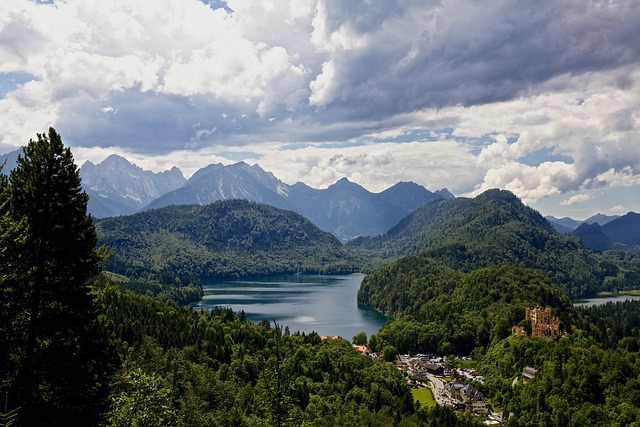Weather and Climate: What to Expect Year-Round – A Comprehensive Guide

Understanding the weather and climate of your destination is crucial for planning a successful trip. Whether you’re packing for a weekend getaway or a long-term stay, knowing what to expect can help you prepare appropriately. This guide provides a detailed overview of weather and climate patterns year-round, helping you make informed decisions for any destination.
1. Understanding Weather vs. Climate
Before diving into specifics, it’s important to distinguish between weather and climate:
- Weather: The short-term atmospheric conditions in a specific place and time (e.g., rain, snow, sunshine).
- Climate: The long-term average of weather patterns in a region, typically measured over 30 years.
2. General Climate Zones
The Earth is divided into several climate zones, each with distinct characteristics:
a. Tropical
- Regions: Near the equator (e.g., Amazon Rainforest, Southeast Asia).
- Characteristics: Warm temperatures year-round, high humidity, and significant rainfall.
- What to Expect: Pack lightweight, breathable clothing and be prepared for sudden rain showers.
b. Dry (Arid and Semi-Arid)
- Regions: Deserts and steppes (e.g., Sahara Desert, Australian Outback).
- Characteristics: Low precipitation, extreme temperature variations between day and night.
- What to Expect: Bring layers for temperature fluctuations and plenty of water to stay hydrated.
c. Temperate
- Regions: Mid-latitudes (e.g., Europe, Eastern USA).
- Characteristics: Four distinct seasons—spring, summer, autumn, and winter.
- What to Expect: Pack a variety of clothing to accommodate changing weather conditions.
d. Continental
- Regions: Interior regions of large continents (e.g., Central Asia, Midwest USA).
- Characteristics: Hot summers and cold winters, moderate precipitation.
- What to Expect: Prepare for extreme temperatures and pack accordingly.
e. Polar
- Regions: Near the poles (e.g., Arctic, Antarctica).
- Characteristics: Cold temperatures year-round, long winters, and short summers.
- What to Expect: Bring heavy winter gear and be prepared for limited daylight in winter months.
3. Seasonal Weather Patterns
Understanding seasonal weather patterns can help you plan your activities and pack appropriately.
a. Spring (March – May)
- Characteristics: Mild temperatures, blooming flora, and increased rainfall in many regions.
- What to Expect: Pack layers, a light jacket, and an umbrella for rain showers.
- Activities: Ideal for outdoor activities like hiking and sightseeing.
b. Summer (June – August)
- Characteristics: Warm to hot temperatures, longer daylight hours, and potential for thunderstorms.
- What to Expect: Bring lightweight clothing, sunscreen, and a hat for sun protection.
- Activities: Perfect for beach trips, festivals, and outdoor dining.
c. Autumn (September – November)
- Characteristics: Cooler temperatures, falling leaves, and harvest season.
- What to Expect: Pack layers, a medium-weight jacket, and comfortable walking shoes.
- Activities: Great for scenic drives, wine tours, and enjoying fall foliage.
d. Winter (December – February)
- Characteristics: Cold temperatures, snow in many regions, and shorter daylight hours.
- What to Expect: Bring heavy winter clothing, including a coat, gloves, and a hat.
- Activities: Ideal for winter sports, holiday markets, and cozy indoor activities.
4. Regional Climate Highlights
Here’s a closer look at the weather and climate in some popular travel destinations:
a. Europe
- Western Europe (e.g., UK, France): Temperate maritime climate with mild winters and cool summers. Expect frequent rain, especially in the UK.
- Southern Europe (e.g., Spain, Italy): Mediterranean climate with hot, dry summers and mild, wet winters.
- Northern Europe (e.g., Sweden, Norway): Cold winters with snow and mild summers. Daylight varies significantly between seasons.
b. North America
- Northeast USA (e.g., New York): Four distinct seasons with cold winters and hot, humid summers.
- Southwest USA (e.g., Arizona): Arid climate with hot summers and mild winters. Low precipitation.
- Canada: Varies widely by region. Northern areas have long, cold winters, while southern regions experience four seasons.
c. Asia
- Southeast Asia (e.g., Thailand, Vietnam): Tropical climate with high humidity and monsoon seasons.
- East Asia (e.g., Japan, South Korea): Four distinct seasons with cold winters and hot, humid summers.
- Central Asia (e.g., Kazakhstan): Continental climate with extreme temperature variations.
d. Australia
- Northern Australia (e.g., Queensland): Tropical climate with wet and dry seasons.
- Southern Australia (e.g., Victoria): Temperate climate with mild winters and warm summers.
e. Africa
- North Africa (e.g., Egypt): Arid climate with hot, dry summers and mild winters.
- Sub-Saharan Africa (e.g., Kenya): Tropical climate with wet and dry seasons.
5. Tips for Weather Preparedness
- Check Forecasts: Use reliable weather apps or websites to check the forecast before your trip.
- Pack Smart: Bring versatile clothing that can be layered and adapt to changing conditions.
- Stay Hydrated: In hot climates, drink plenty of water to avoid dehydration.
- Protect Against the Sun: Use sunscreen, wear a hat, and seek shade during peak sun hours.
- Be Prepared for Rain: Carry a compact umbrella or rain jacket, especially in regions with frequent rainfall.
6. Climate Change Considerations
Climate change is affecting weather patterns worldwide, leading to more extreme and unpredictable conditions. Here’s how to stay informed and prepared:
- Stay Updated: Follow news and updates on climate-related events (e.g., hurricanes, heatwaves).
- Flexible Plans: Be prepared to adjust your travel plans in case of extreme weather.
- Sustainable Travel: Choose eco-friendly travel options to minimize your environmental impact.



